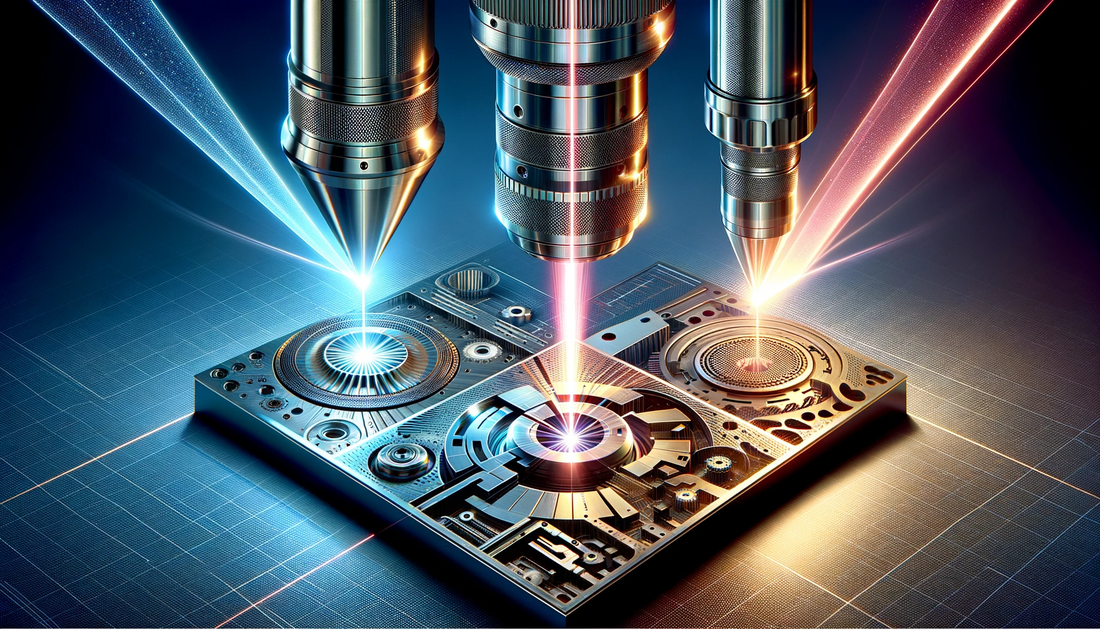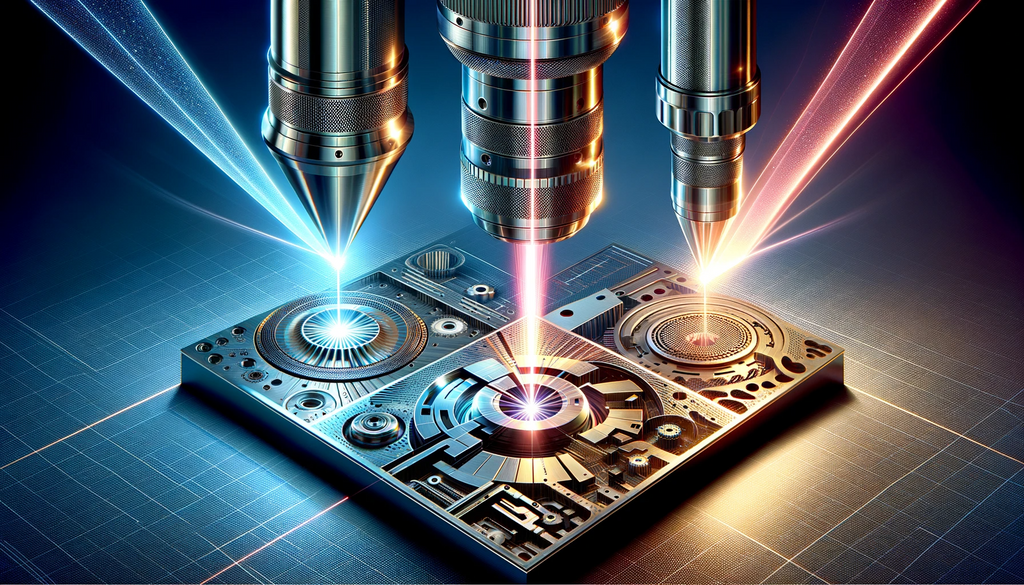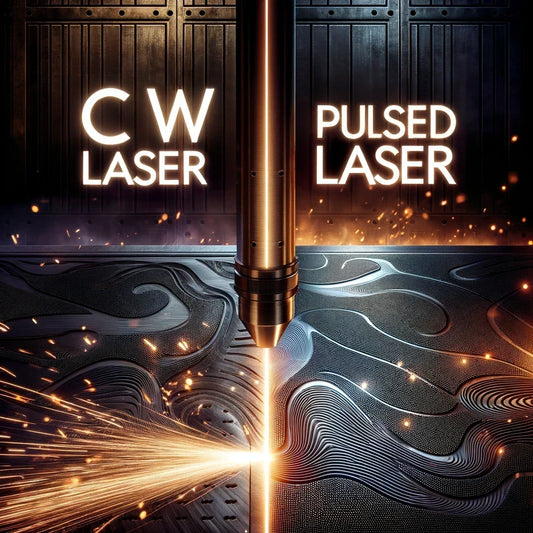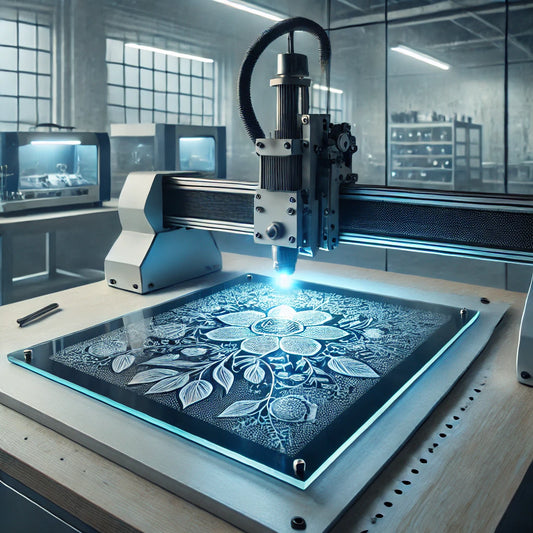
Laser Marking vs Laser Engraving vs Laser Etching

In the realm of precision craftsmanship and manufacturing, lasers have emerged as a pivotal tool, revolutionizing how we approach design and production. They offer a high degree of accuracy, speed, and flexibility that traditional methods struggle to match. For businesses and individuals venturing into the world of material processing, understanding the nuanced differences between laser marking, laser engraving, and laser etching is crucial. Each technique has its distinct advantages and ideal applications, making the choice of method more than a matter of preference—it's about finding the perfect fit for your specific needs.
Whether it's the delicate artistry required in jewelry design or the rugged precision needed in automotive part production, lasers cater to a broad spectrum of industries. They allow for the creation of durable and intricate designs on both metal and non-metal surfaces, paving the way for innovation and creativity. In this guide, we will explore what sets each laser processing method apart, the materials and industries best suited for them, and how to select the appropriate laser machine for your venture.
What is Laser Marking?
Laser marking stands out as a non-contact printing method that offers unparalleled precision and permanence. It involves altering the surface of a material to create visible markings without cutting into it or removing any part. This process is favored for its subtlety and accuracy, making it an ideal choice for both industrial applications and delicate work.
Laser Marking Technics
Annealing Marking
Annealing marking is a specific type of laser marking for metals that induces a color change within the material itself, commonly used on steel and titanium. It involves heating the metal, causing a reaction that leads to a color shift on the surface.
Carbon Migration
In carbon migration, the laser causes the carbon elements in the metal to rise to the surface, creating a darkened area. It's often used for high-contrast markings in the medical device industry due to its resistance to passivation.
Foaming
Foaming is a process typically applied to plastics. The laser beam melts the surface, creating a bubble that reflects light differently, resulting in a noticeable mark.
Coloration
Coloration changes the color of the material through molecular alteration and is often used to create high-contrast images on certain metals and plastics.
Suitable Materials for Laser Marking
Laser marking is incredibly versatile and can be applied to a variety of materials, including:
- Metals (stainless steel, aluminum, gold, silver, titanium, etc.)
- Plastics
- Glass
- Ceramics
- Silicon wafers
Industrial Applications of Laser Marking
The adaptability of laser marking makes it an excellent choice for various industries such as:
- Medical device identification
- Electronic component labeling
- Automotive part serialization
- Aerospace component tracking
- Jewelry design and customization
Laser marking's non-intrusive nature ensures the structural integrity of the component remains intact, making it the go-to option for safety-critical parts. The preciseness and permanency of the markings also meet the rigorous standards required for traceability in various sectors.
In summary, laser marking offers a sophisticated, resilient, and efficient way to create enduring marks on a myriad of materials. Its ability to maintain the integrity of components while providing clear and precise markings makes it indispensable in industries where precision is paramount.
What is Laser Engraving?
Laser engraving is a process that goes a step further than marking. It involves the vaporization of the material's surface to a particular depth, creating a cavity that is visible to the eye and tangible to the touch. This method is not only about altering the color or contrast but physically removing parts of the surface layer to carve out designs, texts, or images.
How Laser Engraving Works?
The laser emits a concentrated beam of light that focuses on the material's surface. As the material absorbs the laser energy, it heats up to the point where the area is vaporized. The laser beam is moved across the surface in the desired pattern, and the depth of the engraving is controlled by the laser's power, speed, and the number of passes it makes over the material.
Adjusting the intensity and duration of the laser's contact with the material allows for different engraving depths. This control enables fine-tuning between a light etch and a deep engraving, making the process suitable for a wide range of applications.
Common Materials for Laser Engraving
Laser engraving is highly effective on materials such as:
- Wood
- Acrylic
- Leather
- Metals (when marked beyond the surface layer)
- Stone
- Certain types of plastics
Applications and Uses of Laser Engraving
This technique is commonly used for:
- Personalized gifts (engraved jewelry, photo frames, etc.)
- Signage (both functional and decorative)
- Custom promotional items
- Industrial labeling that requires depth for durability
- Artistic endeavors on various mediums
Laser engraving's ability to create detailed and permanent designs makes it a favorite in the customization market. The depth of engraving not only adds a dimension of texture but also ensures longevity, even under conditions where the marked items might be subject to significant wear and tear.
The Advantages of Laser Engraving
- Durability: Engravings are long-lasting and can endure exposure to environmental factors.
- Precision: Lasers can produce highly detailed and consistently accurate engravings.
- Speed: Laser engraving is significantly faster than traditional engraving methods.
- Versatility: It can be used on a diverse range of materials and products.
- Non-contact Process: There is no physical contact with the material, reducing the risk of damage or contamination.
Laser engraving stands as a robust solution for businesses and creatives who require depth, texture, and finesse in their designs. It merges the artistic with the practical, providing a tool that is as suitable for intricate artistic work as it is for industrial durability.
What is Laser Etching?
Laser etching is a subset of laser engraving, distinguished by the shallow depth of the mark it creates. It's a thermal process where the laser beam alters the material's surface, causing it to melt and expand. The result is a raised mark that can be felt with the fingertips. Laser etching is commonly used for creating labels and designs that need to stand out from the material's background.
The Etching Process Explained
The laser beam rapidly heats up the material's surface to a high temperature, causing a very slight melt of the material. As the surface cools and solidifies, it creates a raised, distinct mark. The depth of laser etching is typically not more than 0.001 inches, making it less profound than deep laser engraving.
The laser's power, speed, and frequency are finely tuned to control the etch's depth and quality. These parameters are adjusted according to the material being etched and the desired outcome of the marking process.
Materials Suitable for Laser Etching
Laser etching works effectively on materials such as:
- Metals (especially anodized or bare)
- Ceramics
- Polymers
- Coated materials
Practical Applications of Laser Etching
Laser etching is utilized in various applications, including:
- Creating barcodes and serial numbers that are easy to scan.
- Producing clear and legible text for identification tags and labels.
- Designing decorative patterns on metalwork and ceramics.
- Fabricating control panels and switchboards with raised lettering.
Key Differences Among Marking, Engraving, and Etching
| Criteria | Laser Marking | Laser Engraving | Laser Etching |
|---|---|---|---|
| Depth of Marking | Color or contrast change on the surface, no cutting into the material. | Vaporizes material to create a noticeable cavity. | Melts material causing it to expand, less depth than engraving. |
| Durability | Durable, but can wear over time with high-contact. | Very durable due to engraving depth, withstands harsh conditions. | Durable, less so than engraving but typically more than marking. |
| Material Considerations | Metals, plastics, ceramics; high-wear parts. | Hardwoods, acrylic, metals, stones and more; versatile. | Metals and polymers that can endure heat. |
| Application Purposes | Automotive, medical, electronics for readable, non-intrusive marks. | Decorative, awards, dies, molds, stamps due to prominence. | Labels, control panels, shallow yet prominent marks. |
| Speed and Efficiency | Faster, does not remove material. | Slower, material removal layer by layer. | Fast, suitable for high-volume jobs. |
| Precision and Detail | High precision for QR codes, small text. | Detailed, intricate designs due to depth control. | Fine detail due to surface alteration, not as deep as engraving. |
| Cost Considerations | Cost-effective for industrial scale due to speed, minimal wastage. | More costly due to slower speeds, wear on laser. | Balance in cost, durability, and speed without deep erosion. |
Factors to Consider When Choosing a Laser Process
When selecting a laser process for your project, there are multiple factors to consider that will determine the most suitable method. It's essential to evaluate the following elements to ensure that you achieve the desired outcome effectively and efficiently.
-
Material Compatibility
Assess how the material responds to heat and consider its hardness. Materials with different thermal responses and hardness levels will be better suited to specific laser processes. -
Desired Outcome
Determine the aesthetic and functional requirements of the final product. The process you choose should align with the desired visibility and legibility of the mark. -
Durability Needs
Consider the level of contact, wear, and environmental exposure the material will face. This will affect the choice between marking, engraving, or etching based on the durability required. -
Production Volume
Evaluate your operation size and the number of items needing processing. The efficiency of the laser process will impact turnaround time and suitability for batch sizes. -
Precision and Detail
If your project requires high precision for intricate designs or depth control, your choice between marking and engraving will be crucial. -
Cost Considerations
Weigh the initial investment against the operating costs, which include maintenance, consumables, and energy consumption, to find a cost-effective solution. -
Compliance and Industry Standards
Make sure the laser process adheres to the industry-specific standards and quality control measures required for your products.
Understanding these factors will guide you to the appropriate laser process, balancing the need for quality, efficiency, and cost-effectiveness. It’s also recommended to consult with laser process professionals or run test markings before committing to a large-scale operation.
Conclusion
Navigating the world of laser technologies requires a discerning eye and a clear understanding of your project's needs. Whether it's the delicate touch of laser marking, the depth of laser engraving, or the subtle changes brought on by laser etching, each process offers distinct benefits tailored to specific applications. Your decision should not only aim to enhance the aesthetic appeal and functionality of the final product but also to integrate seamlessly with the material you are working with, ensuring the longevity and durability of the mark.
As you weigh the critical factors of material compatibility, desired outcomes, production volume, and cost considerations, remember that the right choice aligns with your operational scale and quality requirements, adhering to relevant industry standards. With the right laser process, you can transform a simple piece of material into a work of art or a marked item that stands the test of time. It's a powerful testament to the intersection of technology and craftsmanship, and your opportunity to harness this precision lies within the beam of a laser. On our website you can find a collection of fiber laser marking and engraving machines. If you need any advise about how to choose the perfect machine for your needs, our customer support will be happy to help you make the right decision.



